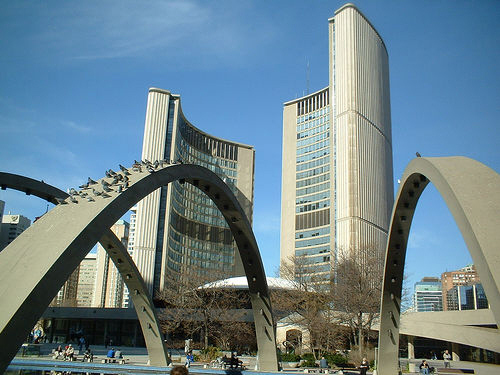
This is the recently released report of the Toronto Regional Real Estate Board concerning the March 2021 results:
“April 6, 2021-
For the third straight month of 2021, record home sales continued in March across the Greater Toronto Area (GTA) with buyers taking advantage of favourable borrowing costs and continued improvement in many sectors of the economy.
GTA REALTORS® reported 15,652 sales in March 2021 – close to double that of March 2020.
While sales were strong, it is important to remember that for the second half of March we are comparing against the initial impact of COVID-19 in the second half of March 2020 when sales activity dropped off dramatically.
With this in mind, it is important to consider annual sales growth for the pre-COVID period (March 1 to 14, 2020) and COVID period (March 15 to 31, 2020):
– There were 6,504 sales reported during the first 14 days of March 2021
– up 41 per cent compared to the pre COVID period in March 2020.
– There were 9,148 sales reported between March 15th and March 31st 2021, an increase of 174 per cent compared to the COVID period of March 2020.
This is a stark reminder of the initial impact COVID-19 had on the housing market and overall economy a year ago. For March 2021 as a whole, new listings were up 57 per cent year-over-year to 22,709.
While representing a strong year-over-year increase, the annual growth rate for new listings was well-below that of sales. The MLS® Home Price Index Composite Benchmark for March 2021 was up by 16.5 per cent compared to March 2020. The average selling price, at $1,097,565 was up by 21.6 per cent over the same period. Following the recent trend, low-rise home sales in regions surrounding the City of Toronto drove price growth
REVIEW
Here are the average sale prices as reported by TRREB for single family homes of all types in the GTA, including houses, townhouses and apartments starting at the beginning of 2018 until now:
Average Prices Month
2018
$734,837 January 1st
$735,874 January 31st
$767,801 February
$784,514 March
$804,926 April
$803,440 May
$808,066 June
$781,918 July
$765,252 August
$796,814 September
$807,538 October
$787,741 November
$749,019 December
2019
$749,019 January 1st
$747,175 January 31st
$779,791 February
$788,133 March
$820,373 April
$838,248 May
$831,882 June
$806,971 July
$792,134 August
$842,421 September
$851,877 October
$843,307 November
$838,662 December
2020
$838,662 January 1st
$838,087 January 31st
$910,024 February
$902,787 March
$820,226 April
$863,563 May
$931,089 June
$943,594 July
$951,219 August
$960,613 September
$968,535 October
$955,828 November
$932,215 December
2021
$932,215 January 1st
$966,735 January 31st
$1,045,435 February
$1,097,565 March
For those following these numbers on a monthly basis, please note that some of the recent sales numbers in 2020 and 2021 have had to be restated. A few transactions may have fallen through and not closed as originally scheduled. Consequently, TRREB deletes them and re-enters them in the proper month. That will throw the average prices off by a few hundred dollars if you are looking back at previous monthly reports for consistency. Changes are more likely for the most recent months.
You will notice that the market has increased to $1,097,565, which exceeds last month which was the all-time peak at $1,045,488.
What usually happens each year? The market starts off in January, rises in February, gains momentum in March and April and reaches its peak for the year in May. The market declines in June, declines in July and then bottoms out in August. In September, it reverses itself and rises once again, and in October, it reaches its second peak for the year. In November, the market declines, as it does again in December, and the cycle repeats itself the following year.
In 2020, the cycle was thrown off due to the COVID-19 pandemic and the consequent global recession. Unpredictably, the market simply gained momentum month after month until it reached a peak in October. It then fell in November, which was expected, and then again in December, which was also expected.
For 2021, we are off to a predictable start. The market go going in January, rose in February and rose again in March.
Let’s undertake an analysis with respect to the rates of return achieved over the last several years. The purpose of this calculation is to smooth out the returns over a longer time period to produce more accurate results. This avoids the rise and fall in a month or two and notably the reference to the exact same month a year ago.
You will notice that TRREB refers back 12 full months for comparison purposes. The results should always look reasonably good, because after all, that was a year ago. As you go forward, there should always be good news to report. On the other hand, you would clearly see the ups and downs of the market if you looked at the monthly results.
The market has declined substantially a few times. Within the last three decades, there are three examples: 1990, 2008 and 2017. The first two are largely historical now.
We will start with 2017 which was a year with a peak in the market and the sudden drop. 2017 started with $730,472 and we are now at $1,097,565, that’s an increase of $367,093 which is a 50.25% increase over the fifty one (51) month period. Expressed over 12 months, that’s an 11.82% annual increase.
2018 started with $734,837 and we are now at $1,097,565, that’s an increase of $362,728, which is a 49.36% increase over the thirty nine (39) month period. Expressed over 12 months, that’s a 15.19% annual increase.
2019 started with $749,019 and we are now at $1,097,565, that’s an increase of $348,546, which is a 46.53% increase over the twenty seven (27) month period. Expressed over 12 months, that’s a 20.68% annual increase.
2020 started with $838,662 and we are now at $1,097,565, that’s an increase of $258,903, which is a 24.70% increase over the fifteen (15) month period.
So, what’s the percentage rate of increase to the end of March?
From 2017 11.82% calculated
From 2018 15.19% calculated
From 2019 20.68% calculated
From 2020 24.70% calculated
The most accurate number here is the 11.82 % annual increase from the beginning of 2017. It’s the longest time period, and is therefore the most steady and accurate. Historically, over one thousand years of history we have seen increases of over 5% per annum. So, this is certainly not new! Typically, for the GTA we might expect 6.5% annually in terms of increases. This is a fairly consistent pattern.
We do run a substantial difficulty with many buyers from 2017. If you bought in April 2017 at the peak, you paid $919,614. That property is now worth $1,097,565 that’s an increase of $177,951 which is a 19.35% increase over the forty seven (47) month period. Expressed over 12 months, that’s a 4.94% annual increase, or just under 5%, which for centuries has been the rate of return on real estate. You can appreciate what a significant difference is made by using a different starting point for the purposes of the calculation. Just four months, and we either have 11.82% or 4.94%.
It does speak to the decision for those who faced closing in 2017 after paying the high prices. They actually broke even in June 2020, while those who failed to complete have suffered substantial losses, with no property at all to show for it. They are now well ahead of just having their money sit in the bank. The message is clear: if you can close, do so, and hold on, because at some point the market will reward you. Those who closed have now achieved the low end rate of return expected on real estate transactions.
As for TRREB, they want to undertake a comparison to February of 2020. That’s specifically, those particular 12 months. My comparison was to the commencement of several different calendar years.
The numbers to avoid are the very short term numbers. So, that would be what’s happening right now in 2021.
Volume of Sales
Here are the sales over the last number of years. It’s important to be aware that potentially, there is a great deal of interest. It was only when the market skyrocketed and then plunged in 2017, that many prospective purchasers were frightened to participate. To a certain extent they have returned but there is very limited supply. That makes it a “super-sellers’ market”. As more and more inventory arrives, the market is likely to transition, but in all probability it will remain a “sellers’ market” until the end of 2021.
2015 101,214
2016 113,040
2017 92,340
2018 78,018
2019 87,750
2020 95,087
You will notice that there were more transactions in 2019 compared with 2018.This trend put the pressure on prices. Buyers obviously chose to enter the market rather than continue to sit on the sidelines. In 2020, the market continued at a faster pace, but stopped rather abruptly in the last half of March and April due to Covid-19. Activity in the market resumed in May and that has continued throughout December.
The prices in real estate are governed by supply and demand just like everything else. The buyers have returned and relatively speaking the inventory has not. Artificially, this provides “price support”. Record low interest rates also support prices. Recent reductions in rates have been reflected in higher prices.
Under current discussion is a rise in the qualifying rate under the CMHC program to 5.25% for a five year term. Once you qualify for that, then you may select the appropriate rate and term that suits you.
The Federal Government and the Provincial Government have provided funds to those who can’t work due to Covid, assisted commercial tenants paying rent, eliminated evictions and lowered interest rates.
We have yet to see a decline in the commercial or residential markets due to the global economic crisis as had been predicted. It may simply be due to the difficulties with the legal system and government intervention. However, the impact is inevitable, we are simply deferring it to sometime into the future. We might expect to see the market become “stale” for a considerable period of time.
We should soon see evidence of the commercial impact. Numerous restaurants have now closed, as have other some additional retailers.
With many office workers working from home, there is no need to attend at the downtown office towers. Zoom is available for meetings and it takes a long time to wait for an elevator in the lobby. We are now seeing quite a few commercial office tenants rethink the amount of space they require. The result seems to be fewer people but more elbow room per person.
COMMENT
Some market trends that we have been seeing:
- Vast increase in the demand for cottages, but now leveling off (leasing and owning)
- Increase in demand for properties with backyards (semis and detached)
- Increase in demand for properties in the suburbs and outlying areas
- Toronto based families looking to relocate to the 905 areas
- 905 based families looking to relocate to 519, 705 and 613 areas
It’s impossible to predict the future, but we can certainly observe the current trends in the marketplace to give us some guidance.
There is some very positive news:
- Vaccinations are being rolled out now, one vaccination per person in Canada by 21 June 2021
- Government support for workers and businesses will still continue for several months to come
- Interest rates continue at surprising low rates, the best in 60 years
- Immigration with an increased demand for housing will resume
- The end of Covid-19 is in sight
Predictions
The market is on quite a “tear” at the moment. This will settle down. Fewer offers will be received per listing. There will be a little less enthusiasm to outbid all others. Mortgage companies will be placing the brakes on approvals in tougher cases. Appraisers will find it difficult to justify increased prices. The market will still be a sellers’ market for the balance of 2021, but it will simply slow down its current pace.
If you would like to discuss the market, please give me a call at 647-404-8150.

Brian Madigan LL.B., Broker
